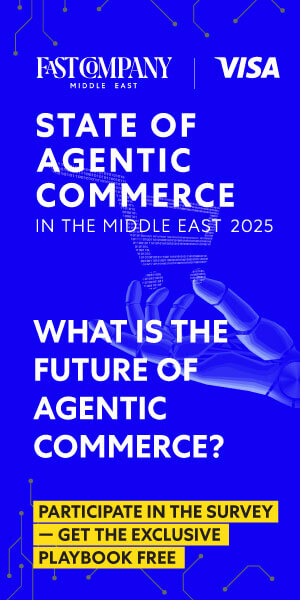- | 9:00 am
Mental health is a workplace problem in the Middle East. Why is it overlooked?
Experts recommend that workplaces offer employees access to mental health resources, awareness programs, and flexible working conditions

Despite mental health awareness, mindfulness at work courses, and stigma-bashing posters, mental health is still taboo at many workplaces in the Middle East. Many employees do not feel organizations are open to accommodating mental illness, or they can talk openly about it, even though it is a major challenge for them.
A 2023 McKinsey & Co. report showed that over 60% of GCC respondents reported symptoms of poor mental health and well-being or had a mental health condition diagnosis, while one in three GCC respondents reported burnout symptoms.
This struggle manifests in workplace retention issues. The report showed that more than 36% of GCC respondents intend to leave their jobs, twice the number of employees globally. Furthermore, almost 40% of locally-born workers say they expect to leave their current organization within the next six months.
But there’s been a shift recently, with workplaces prioritizing mental health. Companies like Microsoft, SAP, and Deloitte have introduced comprehensive support systems, including Employee Assistance Programs (EAPs), flexible work policies, and mental health training initiatives.
Lamisse Muhtaseb, Director of People & Purpose at Deloitte Middle East, observes growing awareness around mental health in the region, reflected in new company policies, government initiatives, community support, and education.
However, the maturity of business practices incorporating well-being principles varies across markets. In more developed regions, mental health services are integrated into primary healthcare, with companies offering enhanced medical coverage and digital platforms for support.
In the UAE, the new Federal Mental Health Law, effective May 2024, protects the rights and treatment of psychiatric patients. “These actions are positive steps toward making mental health care more accessible, reducing barriers to treatment, and challenging stigma,” says Muhtaseb.
“Mental health is now a key focus embedded within HR strategies and major events across the UAE. While mental health was once stigmatized, greater public dialogue has fostered a more open and accepting environment,” says Marketa Simkova, Partner and Head of People, Performance, and Culture at KPMG Lower Gulf.
Simkova adds that professionals are more vocal about mental health, with reports on employee burnout amplifying its importance. This focus aligns with broader corporate goals like Inclusion, Diversity, and Equity (IDE), essential components of any ESG framework, as stakeholders now expect meaningful action beyond mere compliance.
WHY MENTAL HEALTH IS OVERLOOKED
Despite the progress, Maha Botros, organizational psychologist and consultant, says there’s a clear disconnect between acknowledging the importance of mental health and taking meaningful steps to address it.
Botros identifies three key factors: stigma, lack of awareness, and organizational culture. Mental health issues remain stigmatized, causing employees to fear judgment or discrimination. Many hesitate to speak up, worried it might harm their reputation or career prospects.
When it comes to awareness, many workplaces fail to educate their staff on mental health. “I’ve witnessed work environments where mental health was never discussed, which leaves both managers and employees unprepared to recognize or handle these issues,” says Botros.
She also highlights how organizational culture can foster toxicity, saying there’s often an unspoken expectation to “tough it out,” making it hard for employees to take mental health seriously.
Botros describes a familiar scenario: Picture yourself at a high-pressure tech company, where the culture insists on always”pushing through” to meet targets. As anxiety and depression set in, you muster the courage to approach your manager, hoping for support.
“But instead, you hear, “We all get stressed. Maybe you just need a vacation.” There is no offer of help or mention of counseling—just a quick brush-off. You walk away feeling even more alone, realizing that mental health isn’t taken seriously here.”
EFFECT ON EMPLOYEES
Nahla Ahmed, 25, who works in the tech industry, says not only did her previous workplace disregard her mental health, but the company’s culture exacerbated the issue and significantly contributed to her depression and anxiety.
She emphasizes the overlooked influence of workplace culture on employees’ well-being. “People underestimate how much the work environment affects us. We spend a third of our lives at work, so how we’re treated and supported there inevitably shapes our mental health and overall well-being.”
“There was an overall lack of structure but also a lack of flexibility. I was constantly feeling overwhelmed and overworked,” Ahmed says. “The lack of support and constant criticism made me feel anxious and burned out quickly, within just the first month of working there.”
Simkova notes that neglecting mental health in the workplace can lead to absenteeism and reduced productivity.
KPMG’s Future of Work Report 2024 found that 50% of respondents value workplace culture highly, 35% leave due to poor work-life balance, and 38% feel productivity efforts negatively impact their well-being.
Conversely, 77% of employees would work harder if they felt more appreciated, with lack of recognition being a major factor in disengagement.
Absence of mental health support in the workplace results in reduced productivity, lower job satisfaction, and a decline in overall well-being.
Citing studies from the American Psychological Association (APA), Botros notes that employees dealing with mental health challenges such as anxiety or depression often struggle with focus and decision-making, which directly impacts their performance.
“They become disengaged, and their job satisfaction plummets as they feel undervalued and unsupported. Over time, this stress can lead to burnout and physical health issues like insomnia or hypertension.”
A recent Deloitte study revealed that employees lacking mental health support are twice as likely to be disengaged or consider leaving their jobs. Similarly, the World Health Organization reports that poor mental health leads to a $1 trillion annual loss in global productivity.
THE ROLE OF ORGANIZATIONS
Simkova notes that the rise of Gen Z in the workforce has caused a noticeable shift in priorities. “This generation places a greater emphasis on mental health and self-awareness, which has brought the issue to the forefront, especially in the context of trends like the “Great Resignation,” where employees seek environments that prioritize well-being.”
A company’s culture and leadership are fundamental in determining how mental health is prioritized in the workplace.
According to Botros, leaders can create a safe and supportive environment for employees by integrating mental health awareness tactics into the company’s culture—encouraging open conversations, providing resources, and modeling healthy behaviors.
In organizations where a high-performance culture overshadows mental health concerns, employees often hesitate to voice their struggles, adds Botros.
“When leadership does not prioritize mental health or is untrained in recognizing stress signs, it can foster a work environment where mental health issues are stigmatized and ignored.”
It is essential to create a culture where employees feel comfortable seeking help, providing feedback, and openly discussing their mental health concerns.
“Feeling supported is the main thing. It’s about having genuine backing, which goes beyond performative gestures. It needs to be embedded in company policy, including flexible work conditions, access to resources, and mental health coverage,” Ahmed says.
Muhtaseb emphasizes prioritizing funding for mental health services. “Change takes time, and progress must be measured to integrate well-being and mental health into business and people management frameworks. Workplace policies can play a key role in supporting this.”
STRATEGIES TO CONSIDER
Simkova highlights the need for policies and practices that prioritize employee well-being. One of the most important is offering flexible working arrangements. Flexibility in work schedules allows employees to better manage their work-life balance, reducing stress and improving overall mental health.
Establishing policies within a company is crucial and is often overlooked. According to Botros, from mental health days to flexible work arrangements, these policies demonstrate a company’s commitment to supporting mental health and recognizing it as essential to employee well-being.
She suggests that companies prioritize employee mental well-being by providing accessible resources such as EAPs, counseling, and hotlines. Training programs can raise awareness and reduce stigma, while open communication fosters a supportive environment.
Integrating mental health into daily work life through flexible schedules and regular breaks is crucial. Leaders should actively promote mental health and create a safe, comfortable workspace.
Finally, designing workspaces that include quiet areas, ergonomic setups, and policies for digital detox can enhance both physical and virtual work environments, reducing stress and promoting well-being.
Muhtaseb highlights that initiatives embedding well-being into business practices can have far-reaching benefits. Examples include trained and certified mental health first aiders, well-being advocates, a dedicated well-being taskforce, and programs like Returnships and Mentoring, all of which help advance the well-being agenda across the organization.
“While many organizations offer an Employee Assistance Program, it is also crucial to drive the communication on this and other initiatives to keep pace with the changing workforce, new joiners, and ongoing demands.”






































